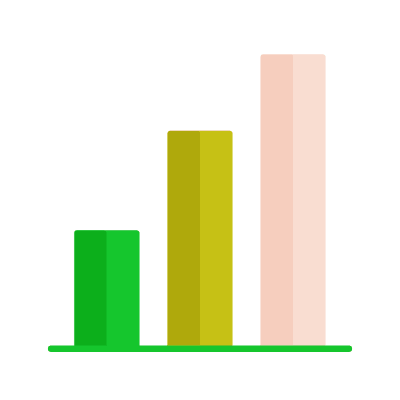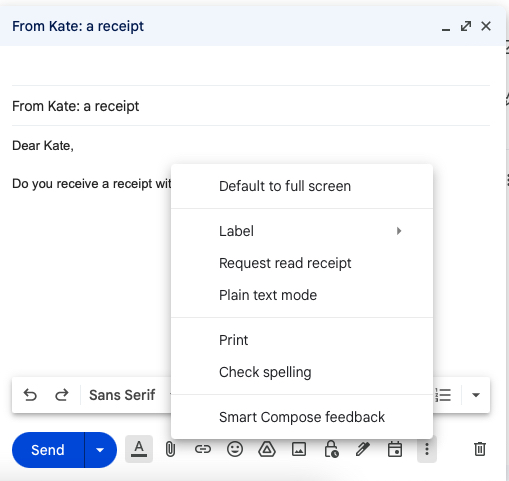Visualizing Growth Trends with Bar Charts: Best Practices, Use Cases, and Insights

Bar charts are among the most effective and widely used visualization techniques for illustrating growth trends over time or across categories. Their clear, rectangular bars allow audiences to instantly compare values, identify patterns, and grasp changes in performance or metrics. In this article, we will explore why bar charts excel at representing growth data, walk through practical implementation tips, and highlight real-world scenarios where bar-chart growth analysis drives better decision-making.
1. Why Use Bar Charts for Growth Visualization?
- Immediate Comparisons
- Bars’ lengths provide an intuitive visual scale, making it easy to compare periods (e.g., quarterly revenue) or segments (e.g., regional sales).
- Clear Trend Detection
- Stacked or grouped bar charts reveal growth trajectories and segment contributions over time.
- Versatility
- Applicable to discrete time intervals (months, years) or categorical breakdowns (product lines, customer cohorts).
- Accessibility
- Readable by non-technical audiences and compatible with screen-readers when properly labeled.
2. Key Design Best Practices
- Axis and Label Clarity
- Use a zero-baseline for the value axis to avoid misinterpretation of growth magnitude.
- Keep category labels concise and rotate them only if necessary.
- Consistent Scaling
- Maintain uniform intervals on the axis to preserve proportionality.
- Avoid “breaking” axes, which can exaggerate growth.
- Color and Contrast
- Leverage color sparingly: assign one hue per series or segment, ensuring adequate contrast against the background.
- Use color palettes accessible to color-blind readers (e.g., blue/orange combinations).
- Annotations and Highlights
- Call out key inflection points or record highs with text annotations or arrows.
- Incorporate data labels when precise values are important.
- Interactivity (Optional)
- In digital dashboards, enable tooltips on hover to reveal exact figures and percentage changes.
3. Variations of Bar-Chart Growth Visuals
- Simple Vertical Bar Chart
- Displays single data series over time—ideal for revenue, user counts, or other singular metrics.
- Grouped (Clustered) Bar Chart
- Compares multiple categories side-by-side for each time period—useful for product-by-product growth analysis.
- Stacked Bar Chart
- Shows total growth alongside individual component contributions—helpful for market-segment breakdowns.
- Horizontal Bar Chart
- Best for long category names or when categories outnumber time points.
4. Implementing Bar Charts: Tools and Techniques
- Spreadsheet Software (Excel, Google Sheets):
- Input data in tabular form: categories in rows, periods in columns.
- Insert → Chart → “Bar” or “Column” type.
- Customize axes, colors, and labels via chart editor.
- Data-Visualization Libraries:
- JavaScript: D3.js, Chart.js, or Highcharts for interactive web dashboards.
- Python: Matplotlib or Seaborn for static reports; Plotly for interactive notebooks.
- Business Intelligence Platforms:
- Power BI, Tableau, or Looker provide drag-and-drop interfaces, with built-in best-practice defaults for bar-chart growth visualizations.
5. Use Cases and Examples
- Monthly Sales Growth:
- Retailers track revenue month-over-month, highlighting seasonal peaks and dips.
- User Acquisition Trends:
- SaaS companies visualize new sign-ups per quarter to assess marketing ROI.
- Market Share Analysis:
- Stacked bar charts reveal each brand’s contribution to total industry growth year-on-year.
- Operational Metrics:
- Manufacturing units chart defect rates or throughput per shift to drive efficiency improvements.
6. Common Pitfalls to Avoid
- Overcrowded Categories: Too many bars can overwhelm readers—consider filtering or grouping low-impact categories into “Other.”
- Inconsistent Time Intervals: Mixing months and quarters in one chart confuses growth patterns—standardize the interval.
- Neglecting Contextual Information: Always include axis titles, data sources, and measurement units for full transparency.
Bar-chart growth visualizations offer a powerful way to communicate trends, compare performance, and inform strategic decisions. By adhering to clear design principles, choosing the right chart variation, and leveraging appropriate tools, analysts and leaders can transform raw data into compelling narratives of progress. Whether you’re presenting quarterly sales, tracking user engagement, or comparing market segments, a well-crafted bar chart will ensure your audience sees not just the numbers, but the story of growth they represent.











